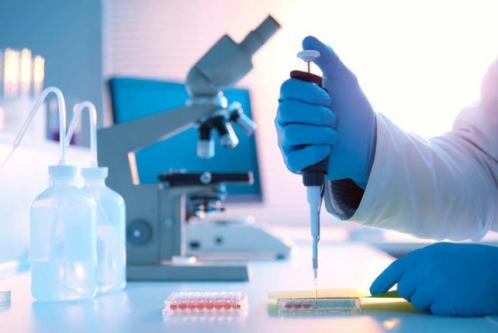 Work up of male partner
Work up of male partner
What it means?
Infertility is defined as absence of pregnancy after one year of unprotected intercourse. Infertility is a couple problem and both partners need to be investigated. Investigations of the male partner for male infertility are done:-
- In order to arrive at the cause of infertility
- Assess possibility of pregnancy
- Any contraindications to pregnancy
- To guide the treatment modality
- Confirming absence of any contributory male factor.
Who are suitable candidates?
- All couples with more than one year of infertility
- Even those men who have fathered children earlier
- Sperm donors
- Before each cycle of IVF
- Long term storage for fertility preservation e.g. before chemotherapy.
- Men wanting to know their fertility status for various reasons
Who should not get work-up?
Men with very short infertility
What are its main components?
- General health check. Includes clinical examination i.e. height, weight, BP, general health assessment, blood tests for Haemoglobin, sugar etc.
- Infection screen for sexually transmitted diseases e.g. HIV, HBsAg, HCV, VDRL
- Semen examination
- Specialized tests as per indication – Hormones, ultrasound, semen culture, etc.
- Advanced tests for detecting subtle abnormalities which are not apparent on routine semen examination
Advantages:
- Work up of male partner is relatively simple and affordable. Although it does not give accurate information regarding fertility potential but it gives lot of information and helps in treatment planning.
Disadvantages:
- There is no direct correlation of sperm counts or motility with fertility. The reports are highly variable and vary from day to day. It is difficult to assess the impact of any medical treatment.
Workup of female partner
What it means?
Infertility is defined as absence of pregnancy after one year of unprotected intercourse. Infertility is a couple problem and both partners need to be investigated. Investigations of the female partner are done in order to:-
- Arrive at the cause of infertility
- Assess possibility of pregnancy
- Any contraindications to pregnancy
- To guide the treatment modality
- Confirming absence of any contributory factor
Who are suitable candidates?
- All couples with more than one year of infertility
- Even those women who have children earlier
- Egg donors and surrogates
- Before each cycle of IVF (In vitro fertilisation)
- Long term storage for fertility preservation e.g. before chemotherapy.
- Women wanting to know their fertility status for various reasons
Who should not get work-up?
- Women with very short infertility
- Postmenopausal women
What are its main components?
- General health check. Includes clinical examination i.e. height, weight, BP, general health assessment. Blood tests for Haemoglobin, sugar, etc.
- Infection screen for sexually transmitted diseases e.g. HIV, HBsAg, HCV, VDRL
- Immunization status for rubella, chicken pox, hepatitis, etc.
- Vit – D status
- X-Ray chest and Mantoux test to rule out past exposure to TB. Genital TB is a common underlying cause of infertility in India.
- Hormone tests includes serum LH and FSH. These are done on day 2-3 of menstrual cycle. Serum TSH is done to exclude thyroid problems and prolactin to rule out hyper-prolactinemia. AMH is a good marker of ovarian reserve and should be done in all cases.
- A good transvaginal ultrasound scan is the most important test. An expert can assess the uterus and the ovaries. Any pathology e.g. fibroids, endometriosis, congenital malformations and many more can be diagnosed. Not only these can be diagnosed but a surgical plan can also be made. A single look at ovaries gives a fair idea about number of follicles in ovaries which are available for stimulation. Normal tubes are not visible on ultrasound. However these still can be damaged.
- Endometrial biopsy. This involves taking out a sample of uterine lining the endometrium. This is done on first day of menses to avoid disturbing a possible pregnancy. Otherwise it can be done few days before menses also. It is a minor procedure. There are no cuts or stitches. The sample obtained is tested for evidence of ovulation, any abnormalities of endometrium and genital TB.
- HSG – hysterosalpingography. Commonly known as tube test. A coloured dye is injected in the uterus under vision of image intensifier. Once uterus and tubes are outlined films are taken. This is minor procedure done under local anaesthesia.
There are other methods also like saline sonography also.
- Serial ultrasound: A transvaginal ultrasound is done on alternate days from 8th day to day of ovulation. This is done to diagnose normal ovulation or the problems which may be there in ultrasound ovulation. The exact size and number of egg containing follicles can be diagnosed.
- Hysteroscopy – This is endoscopic visualization of uterine cavity. Even small pathologies can also be removed.
- Laparoscopy – It is an operative procedure done under general anaesthesia. A small endoscope is inserted through key-hole incision in umbilicus. The abdomen and pelvis are inspected thoroughly. Any problem also can be handled at same sitting.
Advantages:
- Work up of female partner is the first step in the management of infertility. Although it does not give accurate information regarding fertility potential but it gives lot of information and helps in treatment planning.
Disadvantages:
- Many procedures are minor surgeries. Cannot give direct idea of fertility potential.
